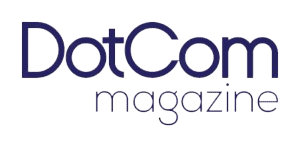Understanding how AI will change the business partnerships is no longer optional for companies looking to thrive in a hyper-connected, fast-evolving digital economy. As organizations increasingly rely on data, automation, and intelligent insights, the nature of collaboration is transforming. Whether you’re a startup seeking allies or a multinational optimizing alliances, knowing how AI will change the business partnerships gives you a competitive edge. From partner discovery to performance tracking, resource sharing to strategic alignment, how AI will change the business partnerships defines the future of enterprise collaboration.
1. AI Accelerates Partner Discovery and Matching
Finding the right partner has always been critical—and complex. AI simplifies and enhances this process through intelligent partner-matching platforms that analyze firmographic data, market trends, past collaborations, and even shared values.
Machine learning models can suggest ideal matches based on complementary technologies, mutual customer segments, innovation potential, and geographical fit. This drastically shortens the partner scouting phase and ensures data-backed compatibility, reducing the trial-and-error traditionally involved.
2. Due Diligence Becomes Faster and Smarter
Due diligence in partnerships typically involves manually sifting through financials, legal records, and operational reports. AI streamlines this by using natural language processing (NLP) and machine learning to review and summarize large datasets, contracts, reputational risk sources, and social sentiment.
This means companies can assess risks faster, with fewer blind spots. Tools like AI-driven risk scoring and real-time compliance monitoring ensure that partnership decisions are not only quicker but also safer.
3. Strategic Alignment Is Driven by Predictive Insights
Strong partnerships require strategic alignment—but aligning goals across organizations is difficult without data. AI enables both sides to share key insights about trends, opportunities, and customer behavior, thereby identifying areas of synergy.
AI-powered analytics platforms can project how a partnership will perform based on simulations, past performance indicators, and market behavior. This allows both parties to make informed decisions on structure, revenue sharing, and innovation collaboration.
Due diligence in partnerships typically involves manually sifting through financials, legal records, and operational reports. AI streamlines this by using natural language processing (NLP) and machine learning to review and summarize large datasets, contracts, reputational risk sources, and social sentiment.
This means companies can assess risks faster, with fewer blind spots. Tools like AI-driven risk scoring and real-time compliance monitoring ensure that partnership decisions are not only quicker but also safer.
4. Communication and Transparency Improve with AI Tools
Effective communication is the lifeblood of any partnership. AI tools like intelligent chatbots, automated reporting systems, and AI-enabled collaboration platforms (like Slack with GPT integrations) facilitate smoother, more transparent interactions between partners.
Sentiment analysis tools also help assess tone and intent in communications—enabling real-time clarity and reducing the chance of misalignment or conflict. These tools empower organizations to create trust through data-backed accountability.
5. AI Optimizes Resource Allocation Between Partners
Business partnerships often involve sharing technology, personnel, and market access. AI analyzes the usage and impact of shared resources and helps dynamically allocate them for maximum return.
For instance, in joint R&D initiatives, AI can track contributions, predict bottlenecks, and suggest redistribution of resources to avoid delays. In co-marketing campaigns, AI evaluates audience response and reallocates budget in real time for optimal performance.
Due diligence in partnerships typically involves manually sifting through financials, legal records, and operational reports. AI streamlines this by using natural language processing (NLP) and machine learning to review and summarize large datasets, contracts, reputational risk sources, and social sentiment.
This means companies can assess risks faster, with fewer blind spots. Tools like AI-driven risk scoring and real-time compliance monitoring ensure that partnership decisions are not only quicker but also safer.
6. Joint Innovation and Product Development Are Supercharged
AI-driven platforms facilitate collaborative innovation by mining customer feedback, identifying unmet needs, and prototyping solutions rapidly. Partners can jointly use AI tools for ideation, testing, and refinement of products or services.
Whether it’s through predictive analytics for customer demand or AI-aided CAD tools in manufacturing, AI allows both parties to contribute value to the innovation process in a coordinated, efficient manner.
7. Performance Metrics Are Continuously Monitored and Improved
One of AI’s strengths is in real-time monitoring. In partnerships, this translates to continuous oversight of KPIs such as revenue impact, customer acquisition, engagement, and cost savings.
AI visual dashboards and automated alerts ensure that both partners remain informed and can adjust course when necessary. This data transparency strengthens trust and minimizes misunderstandings, enabling adaptive rather than reactive collaboration.
8. AI Reduces Legal and Compliance Risks
Business partnerships often span multiple jurisdictions and regulatory environments. AI legal tools automatically scan agreements for compliance risks, flag outdated clauses, and suggest improvements.
In industries like healthcare, fintech, or manufacturing, AI ensures that partnerships meet regulatory requirements such as GDPR, HIPAA, or ISO standards. This compliance automation saves legal costs and prevents costly oversights.
9. Relationship Management Benefits from AI-Driven Insights
Maintaining strong interpersonal relationships in a partnership is just as important as the contractual and operational elements. AI CRMs (Customer Relationship Management systems) track engagement levels, responsiveness, and interaction history to guide better relationship management.
They alert users to follow up, offer sentiment analysis from previous exchanges, and help plan strategic touchpoints—ensuring that the human side of the partnership remains strong and intentional.
10. Exit Strategies and Risk Mitigation Become More Predictable
Not all partnerships last forever. AI helps model potential exit scenarios, predict challenges, and provide data to structure clean, fair separations if necessary.
It enables both partners to establish contingency plans based on simulations—defining exit clauses, IP division, customer transition plans, and financial settlements in a way that minimizes disruption and reputational damage.
Conclusion: AI Is Redefining the DNA of Business Partnerships
As we’ve seen, the implications of how AI will change the business partnerships span the entire lifecycle of collaboration—from discovery and due diligence to execution and exit. Companies that embrace how AI will change the business partnerships stand to gain unmatched agility, data-driven alignment, and innovation capacity.
Gone are the days when partnerships were built solely on intuition or history. In the AI era, alliances are forged through real-time data, continuous feedback, and predictive strategy. The organizations that understand how AI will change the business partnerships will not only thrive—they’ll lead.
Whether you are a startup founder exploring co-marketing deals or an enterprise executive orchestrating multinational joint ventures, it’s time to embed AI into your partnership strategy. The future of business collaboration is smarter, faster, more precise—and AI is at its core.














